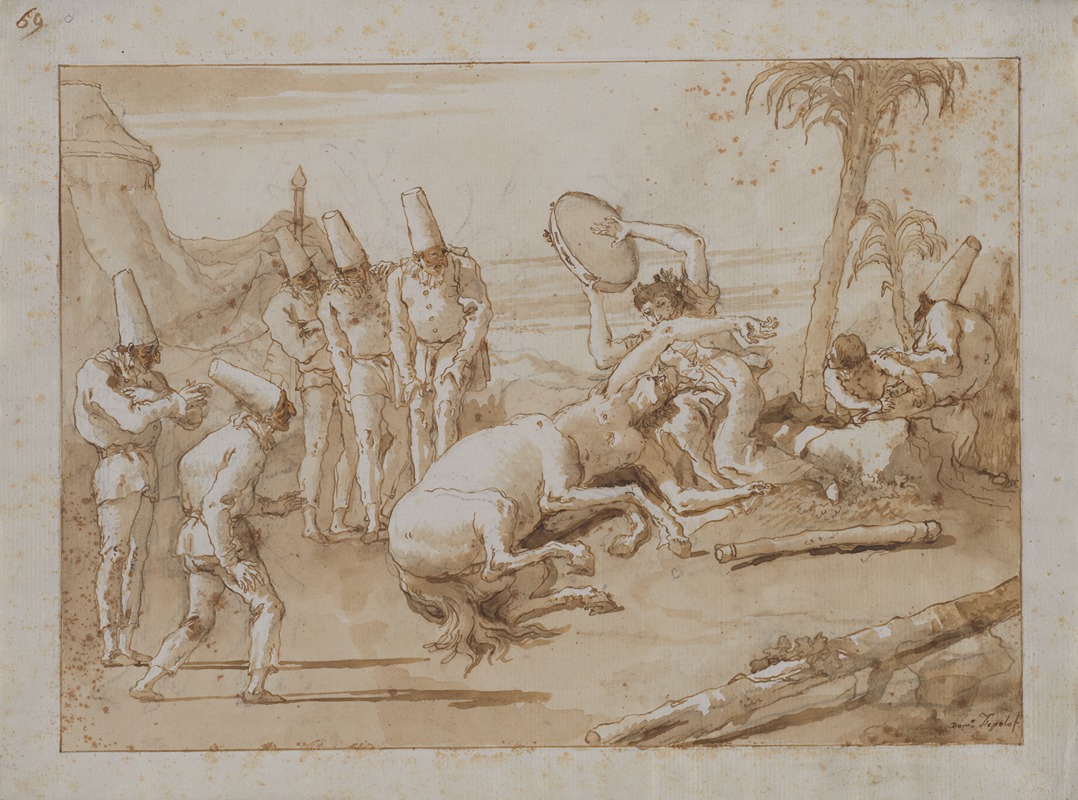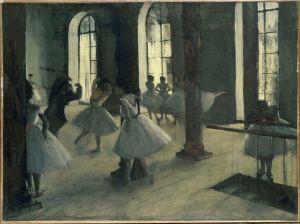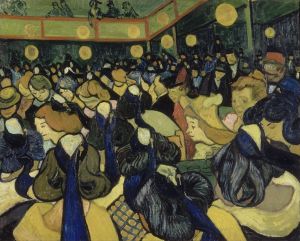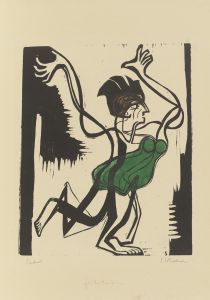
The Woman with a Tambourine
A hand-painted replica of Giovanni Domenico Tiepolo’s masterpiece The Woman with a Tambourine, meticulously crafted by professional artists to capture the true essence of the original. Each piece is created with museum-quality canvas and rare mineral pigments, carefully painted by experienced artists with delicate brushstrokes and rich, layered colors to perfectly recreate the texture of the original artwork. Unlike machine-printed reproductions, this hand-painted version brings the painting to life, infused with the artist’s emotions and skill in every stroke. Whether for personal collection or home decoration, it instantly elevates the artistic atmosphere of any space.
Giovanni Domenico Tiepolo, an Italian painter and printmaker, was a prominent figure in the 18th-century Venetian art scene. He was the son of the renowned artist Giovanni Battista Tiepolo and followed in his father's footsteps, developing a distinctive style that combined elements of Rococo and Neoclassicism. One of his notable works is "The Woman with a Tambourine," which exemplifies his skill in capturing lively and dynamic scenes.
"The Woman with a Tambourine" is a painting that reflects Tiepolo's fascination with theatrical and festive subjects. Although specific details about the painting's creation, such as the exact date and location, are not well-documented, it is believed to have been produced during the latter part of Tiepolo's career when he was exploring themes of commedia dell'arte and everyday Venetian life. This period was marked by a shift in his focus from grand historical and religious compositions to more intimate and genre scenes.
The painting depicts a woman holding a tambourine, an instrument often associated with dance and celebration. Tiepolo's use of vibrant colors and fluid brushstrokes brings a sense of movement and joy to the composition. The woman's attire and the setting suggest a connection to the popular theatrical performances of the time, which often featured music and dance as integral elements. This connection to the performing arts is a recurring theme in Tiepolo's work, reflecting the cultural milieu of 18th-century Venice, where such performances were a significant part of social life.
Tiepolo's technique in "The Woman with a Tambourine" showcases his mastery of light and shadow, creating a sense of depth and volume that enhances the three-dimensionality of the figure. His ability to capture the nuances of human expression and gesture is evident in the woman's lively demeanor, which conveys a sense of spontaneity and charm. This attention to detail and the ability to infuse his subjects with life and character are hallmarks of Tiepolo's artistic style.
The painting is also notable for its composition, which draws the viewer's eye towards the central figure while maintaining a balance with the surrounding elements. Tiepolo's skillful arrangement of forms and his use of perspective create a harmonious and engaging visual experience. This compositional prowess is indicative of his training and experience, as well as his deep understanding of the principles of design.
While "The Woman with a Tambourine" may not be as widely recognized as some of Tiepolo's larger works, it remains an important example of his contribution to the development of genre painting in the 18th century. It reflects his ability to capture the spirit of his time and his talent for transforming everyday scenes into works of art that resonate with viewers.
In summary, Giovanni Domenico Tiepolo's "The Woman with a Tambourine" is a testament to his artistic skill and his engagement with the cultural and social dynamics of his era. Through his use of color, composition, and expressive detail, Tiepolo brings to life a scene that is both specific to its time and universally appealing in its celebration of music and movement.


















